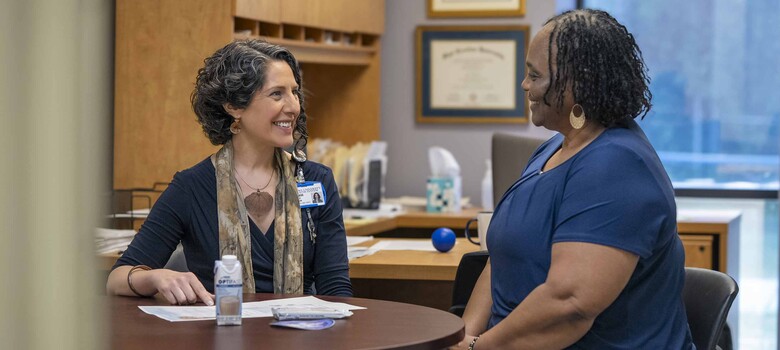New, Minimally Invasive Lung Valve Procedure Helps COPD Patient Breathe Easier

Michael Viola near his home in Indian Trail, NC.
After the collapse of the World Trade Center in 2001, Michael Viola spent weeks breathing contaminated air while he volunteered at Ground Zero distributing water and blankets and clearing debris. In the years that followed, he was diagnosed with chronic obstructive pulmonary disease (COPD). By 2019, Viola, who had been active and full of energy, could barely make it up a flight of stairs. He needed oxygen around the clock. Then he underwent a new, minimally invasive procedure at Duke Health. It improved his lung function, his breathing, and gave him a new outlook on life.
Declining Health and a Life-Changing Diagnosis
Viola spent his entire career on Wall Street, but after 9/11, he relocated his family to North Carolina, where he continued to work in finance. In 2016, he began feeling tired and short of breath but blamed it on aging. “I was getting sluggish,” said Viola, who is now 59. “Climbing the stairs and even walking from my car to the office was challenging. I just assumed I was getting old.”
A doctor near his home in Charlotte diagnosed him with COPD in 2019, and said the culprit was the toxic air he encountered at Ground Zero. Although Viola was passionate about his profession and loved his job, he could no longer keep pace physically. “I was getting worse. I was going to the office on oxygen, and I didn't feel comfortable being looked at differently.” He decided to retire and focus on his health.
New Lung Reduction Procedure Offers Hope
Viola’s first step was beginning pulmonary rehabilitation to improve his lung function. There, a nurse mentioned a procedure for COPD called bronchoscopic lung volume reduction (BLVR) with valves. Viola did some research. “I noticed there weren't many places in the United States that offered it,” he said. Duke Health was one of the few that did.
In Good Hands at Duke
Duke interventional pulmonologists performed the first BLVR with valves procedure in North Carolina, and to date they have completed more of these procedures than any center in the state. They were also part of a clinical trial that led to the FDA’s approval of the procedure in 2019. Given the experience and expertise of the Duke team, Viola felt he could not be in better hands.
Viola was not eager to have major surgery, but BLVR with valves does not require incisions or stitches. During the procedure, a doctor uses a flexible tube inserted through the mouth to place tiny valves in the most diseased part of the lung. The one-way valves block airflow to the unhealthy part of the lung, which gradually shrinks. Adjacent less-diseased lung tissue then expands so the lungs function more efficiently. In the past, patients like Mr. Viola had lung reduction surgery to remove part of the lung, but it is not for everyone, especially very sick patients who are too weak for surgery.
A New Man
In October 2020, Viola underwent the procedure, and he said he feels like a new man today. Now he only needs oxygen at night or when exercising. “I even painted my house. It took me two months, but I felt good about being able to do that without oxygen. My outlook on life has changed completely, and my health has improved dramatically. My wife says it’s a miracle.”


